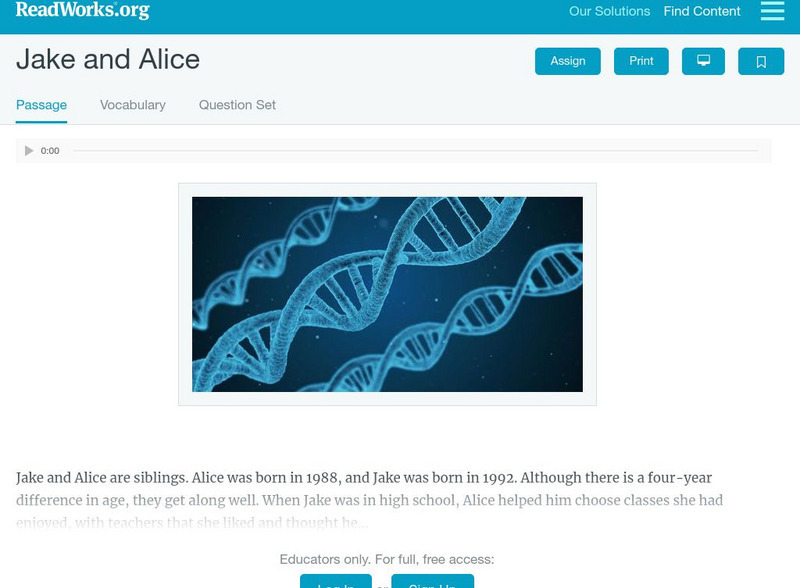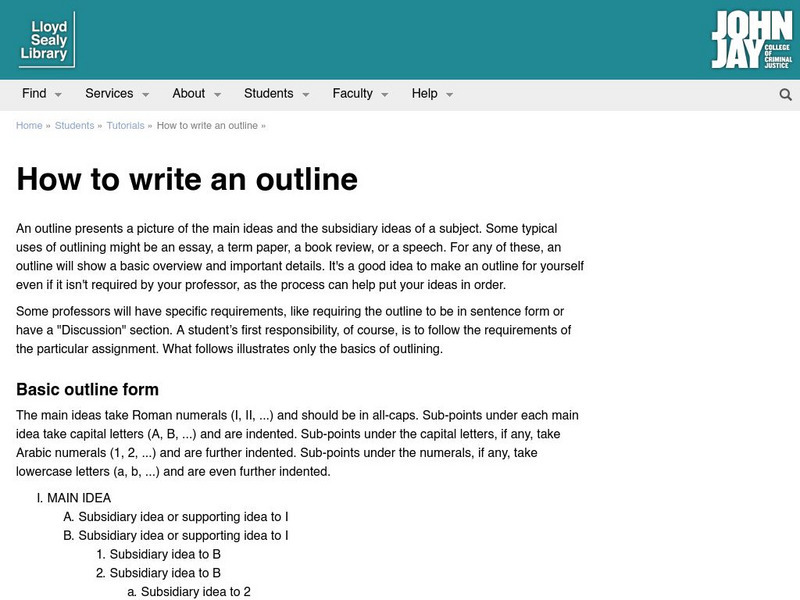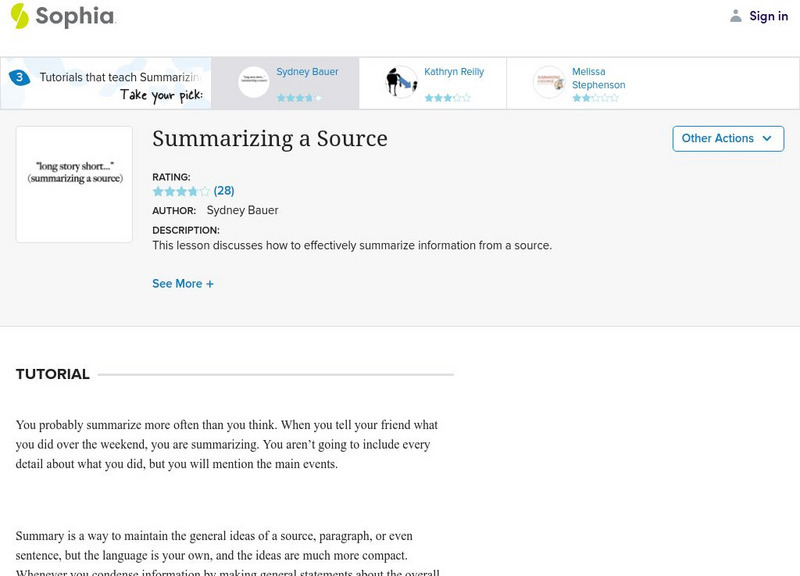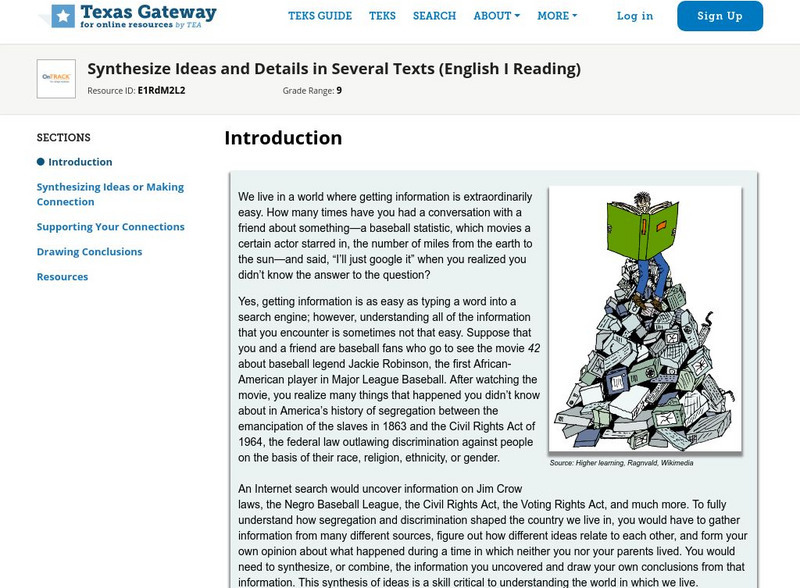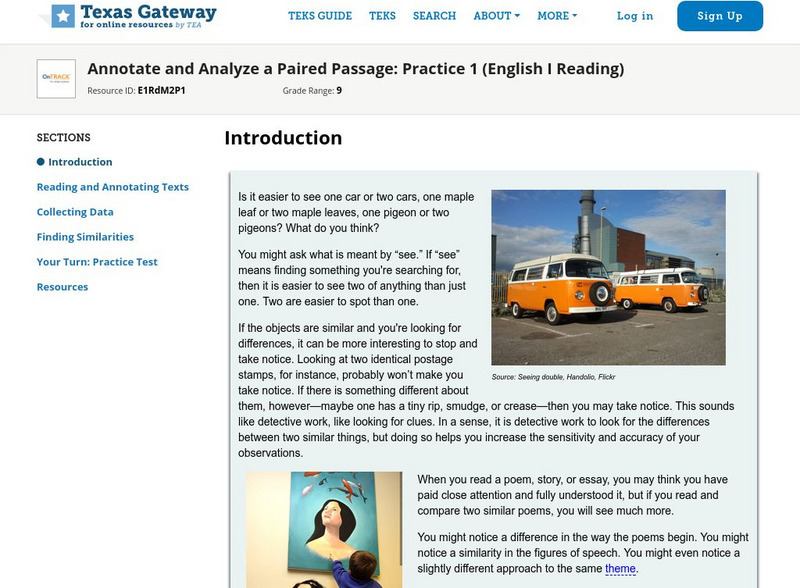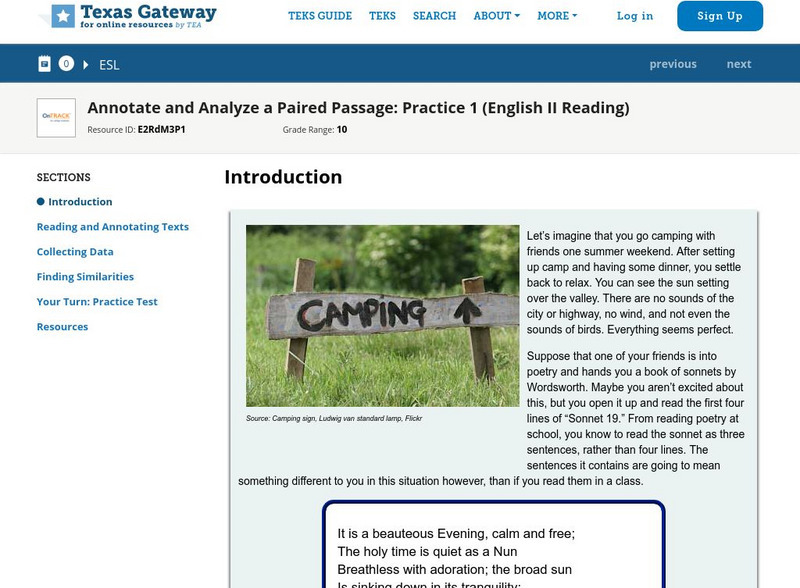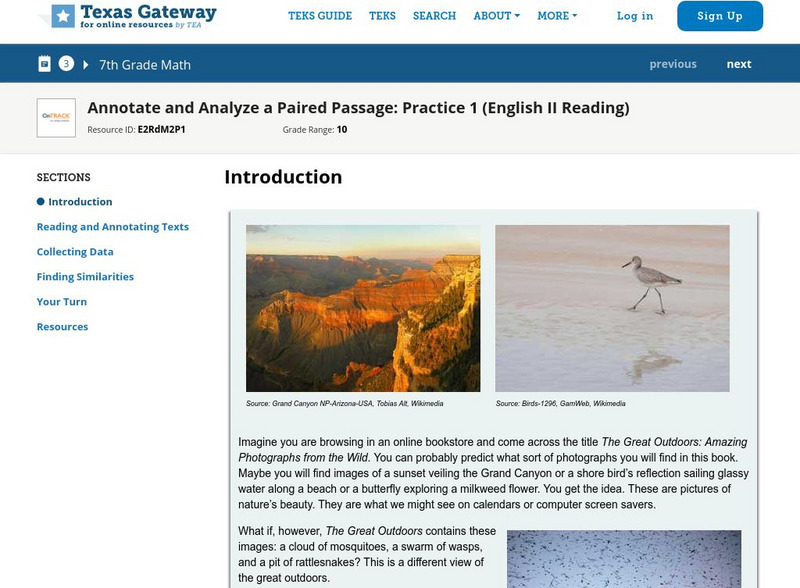Other
English Companion: Reading Expository Text
Taken from "Reading Reminders: Tools, Tips, and Techmiques," the information on this website provides advice on how to read, understand, analyze, and write expository texts.
E Reading Worksheets
E Reading Worksheets: Main Idea Structure and Valentine's Day Worksheet
Written exercises related to identifying the main ideas and details are provided on this module. Students will enjoy learning about Valentine's Day in these text structure exercises.
Read Works
Read Works: Jake and Alice
[Free Registration/Login Required] An informational text about genetic traits, what they determine, and how they mutate. A question sheet is available to help students build skills in reading comprehension.
City University of New York
John Jay College: Basic Outlining
This site gives you general information on outlining. It also gives you a sample of some ideas to outline.
Sophia Learning
Sophia: Reading Strategies: Tutorial
In this slideshow tutorial, students will review different types of reading strategies to promote comprehension of text. The strategies included are the following: making predictions, visualizing, questioning the text, retelling,...
Sophia Learning
Sophia: Summarizing a Source
Information that can be read or listened to that discusses two methods of how to write effective summaries as well as how to avoid plagiarism when summarizing informational texts. Finally, examples of literary summaries are provided....
AdLit
Ad lit.org: What's the Big Idea? Integrating Young Adult Literature
Drawing on New York City teachers' experiences, this article examines three ways to effectively integrate young adult literature into the curriculum: use core texts (usually novels, but also other genres as well) that the entire class...
Education Development Center
Tune in to Learning: Scanning for Specifics
Self-scoring interactive lesson for improving skills in scanning informational texts and charts for keywords and specific details.
Harvard University
Harvard College Writing Center: How to Do a Close Reading
A brief explanation of the tasks involved in doing a close reading in preparation for writing. This writer breaks the process into three steps which involve annotating the text, looking for patterns, and asking questions of the text.
Other
Siu Edwardsville: Professional Development Center: Lesson Plan: Inference [Pdf]
Lesson teaching the use of word selection, context, structure, and specific references in making inferences within non-fiction texts.
ReadWriteThink
Read Write Think: Text Features: Non Fiction [Pdf]
Compare the printed page to an electronic web page and use this activity to discuss the similarities and differences. A cross-curricular tie-in with ecosystems. Could easily be adapted to another subject area.
Texas Education Agency
Texas Gateway: Analyze Texts With Similar/different Purposes
[Accessible by TX Educators. Free Registration/Login Required] Make complex inferences and use textual evidence such as imagery and figurative language to support understanding.
Texas Education Agency
Texas Gateway: Evaluate a Text for Its Graphics and Visual Appeal
Evaluate a text for the clarity and appeal of its graphics.
Texas Education Agency
Texas Gateway: Analyze Controlling Idea or Thesis, Purpose, and Textual Elements
Analyze the controlling idea and the specific purpose of the text, identifying the textual elements that support that purpose including the most important details. RI.9-10.2 central idea/summary [Unarchived version is accessible by TX...
Texas Education Agency
Texas Gateway: Synthesize Ideas and Details in Several Texts (English I Reading)
Synthesize ideas and details in texts and support the connections with textual evidence.
Texas Education Agency
Texas Gateway: Annotate and Analyze a Paired Passage: Practice 2
Read and annotate paired texts in order to make inferences, draw conclusions, and synthesize ideas and details using textual evidence.
Texas Education Agency
Texas Gateway: Annotate and Analyze a Paired Passage: Practice 1
Read and annotate paired texts in order to make inferences, draw conclusions, and synthesize ideas and details using textual evidence.
Texas Education Agency
Texas Gateway: Annotate and Analyze a Paired Passage: Practice 1
Read and annotate paired texts in order to make inferences, draw conclusions, and synthesize ideas and details using textual evidence.
Texas Education Agency
Texas Gateway: Annotate for Meaning (English Ii Reading)
You will learn how to annotate or mark a text as you read and re-read to gain a deeper understanding of the text.
Texas Education Agency
Texas Gateway: Annotate and Analyze a Paired Passage: Practice 1
Read and annotate paired texts in order to make inferences, draw conclusions, and synthesize ideas and details using textual evidence.
Sophia Learning
Sophia: Summary and Paraphrase: Tutorial
In this slideshow tutorial, students are provided with notes that distinguish "summarizing" from "paraphrasing" content. Examples of effective summaries and paraphrases of text are provided. Then students have the opportunity to engage...
Lumen Learning
Lumen: Using Sources: Paraphrase and Summary
This lesson focuses on how to integrate source material using paraphrase and summary and the differences between the two. It also provides a practice exercise.
E Reading Worksheets
E Reading Worksheets: Main Idea Worksheets
In this learning module, students will learn how to identify the main ideas in individual pararaphs. Worksheets, PowerPoint lessons, and activities are provided to reinforce the concept of main idea. This module is designed to support...
Texas Education Agency
Texas Gateway: Compare Narrative and Informational Texts: Practice 1
[Accessible by TX Educators. Free Registration/Login Required] In this lesson, you are going to analyze differences in texts that use visual techniques to present narrative and informational content. You will also look at how information...

